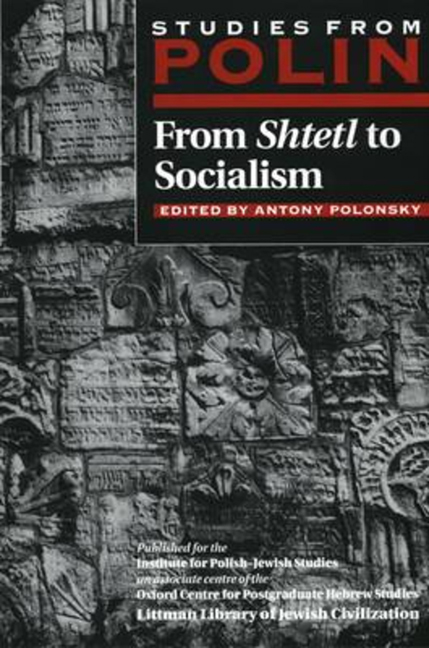Book contents
- Frontmatter
- Dedication
- Editors and Advisers
- Polin
- Polin: Studies in Polish Jewry
- Acknowledgements
- Contents
- List of Maps
- Introduction
- PART I PRE-PARTITION POLAND (to 1795)
- PART II THE NINETEENTH CENTURY
- PART III BETWEEN THE TWO WORLD WARS
- PART IV THE SECOND WORLD WAR
- 22 Jews and Poles under Soviet Occupation (1939-1941): Conflicting Interests
- 23 The Western Allies and the Holocaust
- 24 The Conditions of Admittance and the Social Background of Jewish Children Saved by Women's Religious Orders in Poland, 1939-1945
- PART V AFTER 1945
- Notes on Contributors
- Chronological Table
- Maps
- Glossary
- Index
24 - The Conditions of Admittance and the Social Background of Jewish Children Saved by Women's Religious Orders in Poland, 1939-1945
from PART IV - THE SECOND WORLD WAR
- Frontmatter
- Dedication
- Editors and Advisers
- Polin
- Polin: Studies in Polish Jewry
- Acknowledgements
- Contents
- List of Maps
- Introduction
- PART I PRE-PARTITION POLAND (to 1795)
- PART II THE NINETEENTH CENTURY
- PART III BETWEEN THE TWO WORLD WARS
- PART IV THE SECOND WORLD WAR
- 22 Jews and Poles under Soviet Occupation (1939-1941): Conflicting Interests
- 23 The Western Allies and the Holocaust
- 24 The Conditions of Admittance and the Social Background of Jewish Children Saved by Women's Religious Orders in Poland, 1939-1945
- PART V AFTER 1945
- Notes on Contributors
- Chronological Table
- Maps
- Glossary
- Index
Summary
The world's religious orders for women constitute a rather picturesque landscape, and, there is little point in denying it, quite a confused one for the historian. Apparently not even in Rome do they know exactly how many orders there are and what they do. The picture is no clearer in Poland. Both before the Second World War and throughout its course no one, it seems, was possessed of comprehensive information as to their number, location or of the nature of activities carried out by the nuns. Each group, if I may use such a term, followed its own path. It had its own authorities - whether in Poland, Rome or elsewhere - its own goals, its own kind of spirituality and its own habit - or lack of one. There was no overall authority that could coordinate the female religious orders on a national scale, set out a concrete programme of action or formulate any kind of position. Furthermore, every group had different capabilities and suffered a different fate during the occupation. All this had a fundamental effect on the question of admitting Jewish children into the convents.
The hiding of Jewish children in Polish convents during the Second World War presents the historian with very difficult problems. The fundamental difficulty is the lack of sources. Rescuing Jews and their children in Poland was carried out in the strictest conspiratorial conditions and obviously the nuns during the war did not record these activities. After the war, political conditions and the pressure of day-to-day work, as well as the sisters’ own attitudes, were not conducive to the task of completing or supplementing the archives with notes or statements concerning their wartime activities, As for the children themselves, they were collected by their parents or relatives after the war or by Jewish organisations, and left the convents for all corners of the world, or were scattered throughout Poland and are rarely able, or willing to visit the places where they spent their war time childhood. Therefore, in my travels in Poland, Israel and America collecting information, I had to create my own sources.
- Type
- Chapter
- Information
- From Shtetl to SocialismStudies from Polin, pp. 423 - 454Publisher: Liverpool University PressPrint publication year: 1993



